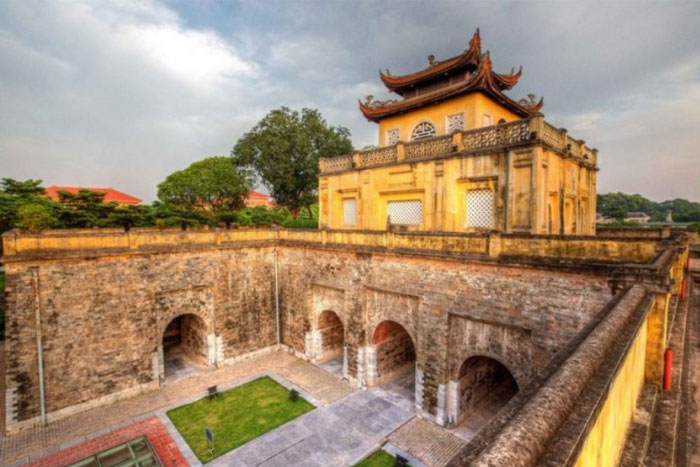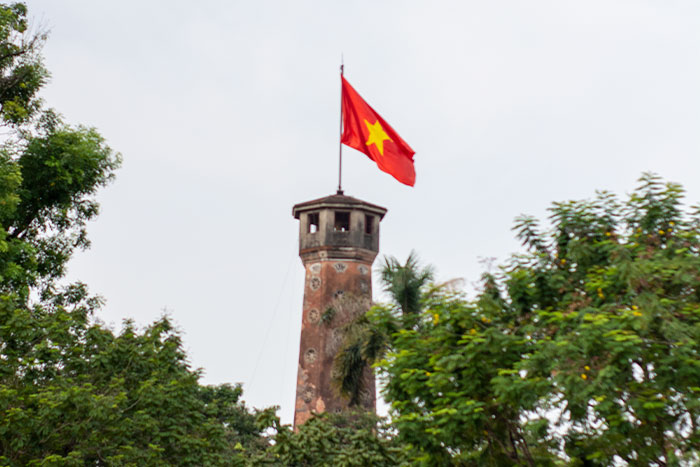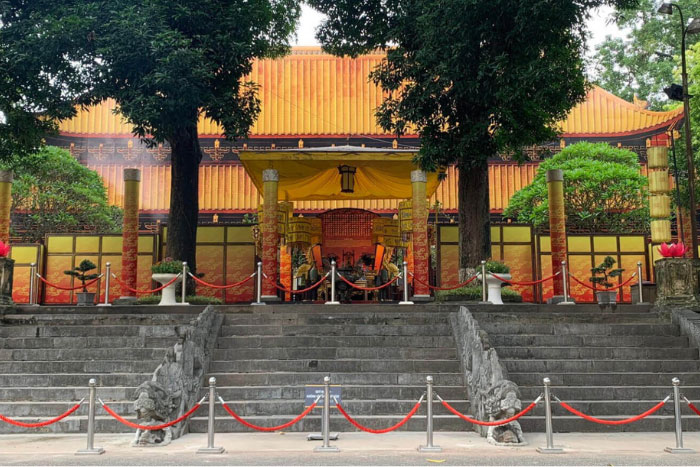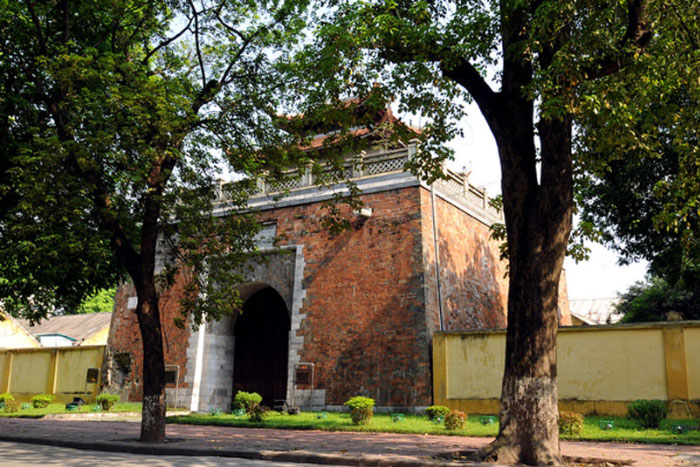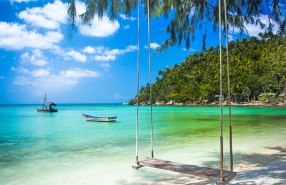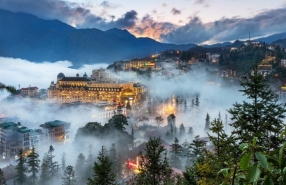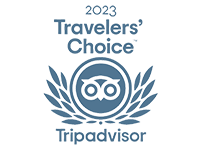Being one of the most history rich cities in the world, Hanoi’s pass can be quite difficult to discover. So why not start from the beginning of the long history of Hanoi, that being the Thang Long Citadel. Come with us to see for yourselves the mystical citadel of Thang Long, Hanoi.
1. What is the imperial citadel of Thang long?
Thăng Long, Hanoi Imperial Citadel. This magnificent complex, known as 昇龍皇城 in Hán tự and Thăng Long Hoàng thành in Hán-Việt, is a testament to the enduring legacy of Vietnam's dynasties and empires.
From its humble beginnings in the pre-Thăng Long era, when An Nam reigned over the land in the 7th century, to its zenith during the Lý, Trần, and Lê dynasties, the Hanoi Imperial Citadel has witnessed the rise and fall of empires. Each epoch left its mark on the citadel's landscape, with splendid palaces, majestic pagodas, and formidable fortifications adorning its grounds.
As the capital city evolved and transformed, so too did Imperial Citadel of Thang Long. Under the reign of the Nguyễn dynasty, it seamlessly transitioned into the bustling metropolis of Hanoi, continuing to serve as a beacon of political, cultural, and economic significance.
Today, Thang Long Citadel stands as a UNESCO World Heritage Site, attracting visitors from around the globe who come to marvel at its architectural splendor and immerse themselves in its rich history. It is a place where the past comes alive, where the stories of emperors and scholars, warriors and poets, are etched into every stone and every corner.
Exploring the ancient citadel, one can't help but feel a sense of awe and reverence for the generations that came before. It's a journey through time, a glimpse into the soul of Vietnam, and a reminder of the enduring power of culture and heritage. Imperial Citadel of Thang Long is more than just a collection of historical relics; it's a living testament to the resilience and spirit of a nation.
2. What is there to see in the citadel of Thang Long
The World Heritage Site encompasses an area of 20 hectares, which is a portion of the total 140 hectares of the Imperial Citadel of Thang Long. This designated area includes the archaeological site located at 18 Hoàng Diệu Street and the surrounding region bounded by four main roads: Điện Biên Phủ, Nguyễn Tri Phương, Phan Đình Phùng, and Hoàng Diệu.
Within this significant heritage site, there are several notable relics:
a. Archaeologist Site
Step back in time and embark on a journey through the rich tapestry of Vietnam's architectural history as we delve into the fascinating discoveries unearthed at the Thang Long Citadel archaeological site. Nestled within the heart of Hanoi, this ancient citadel has been a focal point of historical intrigue, offering tantalizing glimpses into the grandeur of Vietnam's past.
At the core of traditional Vietnamese architecture lies a unique structural system, characterized by wooden frames and sturdy column supports. This ingenious design allows for the weight of the structures to be elegantly distributed, obviating the need for conventional footings. Instead, massive stone platforms, dwarfing the diameter of the columns, provide essential reinforcement, ensuring the stability of these architectural marvels.
Recent archaeological excavations have shed new light on the intricate engineering techniques employed by the Vietnamese ancestors. Through meticulous study of the ruins and geological surveys of the area, researchers have uncovered evidence of an ancient north-south flow, hinting at the strategic location of the Hanoi Imperial Citadel within the historical landscape.
But it's not just the structural ingenuity that captivates archaeologists and enthusiasts alike. The Thang Long Citadel site is a treasure trove of cultural artifacts, offering invaluable insights into the daily lives of past civilizations. From pottery fragments to ornate porcelain pieces, each discovery adds another layer to the complex tapestry of Vietnam's cultural heritage.
b. Hanoi Flag Pole
Standing tall amidst the bustling streets of Hanoi, the Hanoi Flag Tower, known affectionately as the Ky Dai Hanoi, stands as a symbol of resilience and strength. Built during the Nguyen Dynasty in the early 19th century, this iconic structure was erected in response to the tragic loss of the original flagpole to Chinese invaders in 1779. Its construction commenced in 1805 and was completed seven years later in 1812, marking a significant milestone in the city's history.
As you approach the Hanoi Flag Tower, you are greeted by its imposing presence, with three tiers of pyramid-shaped pedestals rising gracefully into the sky. Each tier diminishes in size as it ascends, creating a visually striking silhouette against the skyline. Adorned with intricate brick cladding, the base of the tower exudes a sense of grandeur and sophistication.
Ascending the tower, you embark on a journey through history, guided by spiral staircases that lead you from one tier to the next. Each tier tells a story of craftsmanship and dedication, with the names of cardinal directions inscribed on the doorways, symbolizing the tower's role in guiding and protecting the city.
At the pinnacle of the tower, you are rewarded with a breathtaking view of Hanoi, stretching out before you in all its splendor. The column shaft, octagonal in shape, tapers upwards, culminating in a cylindrical platform that serves as the flagpole holder. Here, the national flag of Vietnam flies proudly, a symbol of unity and pride for the Vietnamese people.
Despite facing the threat of demolition during the French occupation of Hanoi, the Hanoi Flag Tower miraculously survived, spared from destruction by a twist of fate. Today, it stands as a testament to the city's resilience and heritage, inviting visitors to marvel at its beauty and learn about its storied past.
Located within the grounds of the Vietnam Military History Museum, the Hanoi Flag Tower continues to stand as a symbol of Vietnam's enduring strength and perseverance. It serves not only as a reminder of the city's rich history but also as a beacon of hope and inspiration for future generations. So, the next time you find yourself in Hanoi, be sure to pay a visit to this magnificent landmark and experience the legacy of the Hanoi Flag Tower for yourself.
c. Kinh Thien Palace
The Kinh Thien Palace stands as a central piece within the rich tapestry of historical landmarks that make up the ancient Hanoi Imperial Citadel. Situated prominently at the heart of the relic complex, it is flanked by notable features such as the Doan Mon Gate and the iconic Hanoi Flag Tower, with the Hau Lau just behind. Today, all that remains of the Kinh Thien Palace are the remnants of its foundation, adorned with a raised balustrade to the south.
At its forefront, facing the southern direction, the palace boasts a grand staircase crafted from imposing stone slabs. This magnificent platform comprises ten steps, adorned with four intricately carved stone dragons that divide the ascent into three distinct paths, creating a mesmerizing dragon motif. Dating back to the 15th century during the Le Dynasty, these stone dragons are true marvels of architectural and artistic craftsmanship. Carved from striking blue stone, they feature towering heads, piercing eyes, and flowing manes, evoking a sense of majestic power.
The sinuous bodies of the dragons coil gracefully, tapering towards the palace’s elevated platform, adorned with undulating fins that resemble billowing clouds and flickering flames. Flanking the palace’s platform are elongated stone blocks, artfully stylized to depict dragons, further enhancing the grandeur of the Kinh Thien Palace.
Today, as we reflect on the rich history and cultural heritage embodied by the Kinh Thien Palace, we are reminded of its significance as a symbol of Vietnam's storied past. Though time may have weathered its physical form, the spirit of the palace lives on, continuing to inspire awe and reverence for generations to come.
d. The D67 building
In the heart of Hanoi Imperial Citadel lies the historic Tổng hành dinh - Nhà D67, where pivotal decisions that shaped Vietnam's revolution were made. This includes landmark events like the Tet Offensive in 1968 and the Easter Offensive in 1972, both of which saw the Vietnamese forces triumph against formidable odds, marking significant turning points in the conflict.
The underground bunker complex, known as D67, served as the nerve center for the Central Party Committee and the Central Military Commission. Accessed through two tunnels, it sits beneath the courtyard between the Kinh Thien Palace and House D67. These tunnels, lined with granite, lead to a series of interconnected rooms, including a main meeting chamber, offices, and storage spaces, all equipped with communication systems and essential amenities.
Built during a time of heightened tension, the bunker system was constructed with meticulous attention to detail. Its reinforced steel doors and robust ventilation systems ensured the safety and functionality of the underground headquarters. Despite the challenges posed by U.S. bombings, the leadership continued their work from within the secure confines of the bunker.
Today, remnants of this historic era are preserved within the bunkers, serving as tangible reminders of Vietnam's resilience and determination in the face of adversity. From the relics of telecommunication equipment to the strategic planning rooms, each element tells a story of Vietnam's struggle for independence and sovereignty.
e. The North Gate
The North Gate, or Cửa Bắc, stands as a silent sentinel in the heart of Hanoi, a testament to the city's rich history and enduring spirit. Steeped in legend and lore, this iconic structure has witnessed the ebb and flow of time, bearing witness to moments of triumph and turmoil.
Built during the Nguyen Dynasty atop the remnants of a gate dating back to the Lê Dynasty, Cửa Bắc is a striking architectural marvel. Its imposing facade, flanked by sturdy walls adorned with intricate stone trimmings, exudes an aura of grandeur and resilience. As visitors pass through its arched entrance, they are transported back in time to an era of dynastic power and imperial splendor.
But Cửa Bắc is more than just a relic of the past; it is a living testament to the city's indomitable spirit. Bearing scars from past conflicts, including the bombardment by French forces in 1882, the gate stands as a symbol of resilience and defiance. Each bullet hole etched into its walls tells a story of bravery and sacrifice, reminding us of the city's enduring struggle for freedom and independence.
Today, the upper floor of Cửa Bắc serves as a sacred space, honoring the memory of Nguyen Tri Phuong and Hoang Dieu, two heroes who valiantly defended Hanoi against foreign invasion. Their legacy lives on within the hallowed halls of this historic landmark, inspiring future generations to uphold the values of courage and patriotism.
As visitors explore the grounds of Cửa Bắc, they cannot help but marvel at its architectural splendor and historical significance. From the intricately carved stone plaques to the remnants of ancient walls buried beneath its foundation, every corner of this majestic gate tells a story of the city's rich cultural heritage.
In a rapidly changing world, Cửa Bắc stands as a timeless symbol of Hanoi's enduring legacy, reminding us of the importance of preserving our shared history for generations to come.
3. Some tips for your visit of the citadel of Thang Long
Here are some tips to enhance your visit to the Citadel of Thang Long:
Plan Ahead: Before your visit, take some time to research the citadel's history, significance, and notable attractions. This will enrich your experience and help you appreciate the site's cultural and historical importance.
Wear Comfortable Clothing and Footwear: The Hanoi Imperial Citadel is expansive, with various areas to explore, so be sure to wear comfortable clothing and sturdy footwear suitable for walking and exploring uneven terrain.
Stay Hydrated: Vietnam's climate can be hot and humid, especially during certain times of the year. Bring a refillable water bottle to stay hydrated throughout your visit.
Visit Early or Late in the Day: To avoid crowds and the heat of the midday sun, consider visiting the citadel early in the morning or later in the afternoon. This will allow you to explore the site more comfortably and capture better photos without many tourists in the background.
Respect Cultural Norms: As a place of historical and cultural significance, it's important to respect the rules and customs of the citadel. Dress modestly, speak quietly, and refrain from touching or climbing on the ancient structures.
Engage with Local Guides: Consider hiring a local guide or joining a guided tour to gain deeper insights into the citadel's history and architecture. Local guides can provide fascinating stories and historical context that you might not discover on your own.
Bring Sun Protection: Don't forget to pack sunscreen, sunglasses, and a hat to protect yourself from the sun's rays during your visit.
Explore Nearby Attractions: After visiting the citadel, take some time to explore other nearby attractions in Hanoi, such as the Temple of Literature, Hoan Kiem Lake, or the Old Quarter. This will give you a well-rounded experience of the city's rich history and culture.
By following these tips, you can make the most of your visit to the
Imperial Citadel of Thang Long and create lasting memories of this remarkable UNESCO World Heritage Site. If an authentic trip to
Thang Long Citadel is what you are after, then don't hesitate to contact us : AUTOUR ASIA -
Vietnam Travel Agency to ensure you the voyage of your dream.
You might be interested in:

